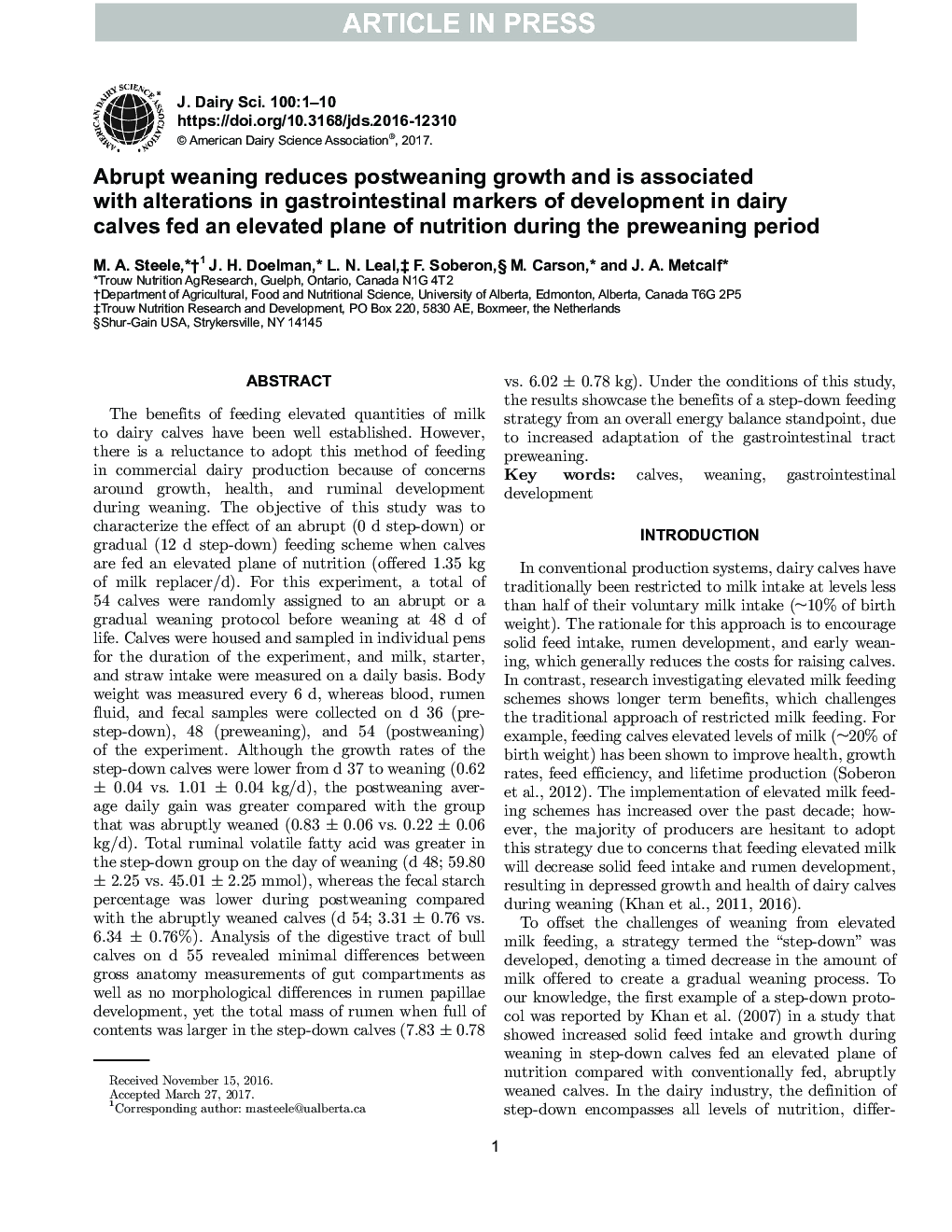| Article ID | Journal | Published Year | Pages | File Type |
|---|---|---|---|---|
| 5541746 | Journal of Dairy Science | 2017 | 10 Pages |
Abstract
The benefits of feeding elevated quantities of milk to dairy calves have been well established. However, there is a reluctance to adopt this method of feeding in commercial dairy production because of concerns around growth, health, and ruminal development during weaning. The objective of this study was to characterize the effect of an abrupt (0 d step-down) or gradual (12 d step-down) feeding scheme when calves are fed an elevated plane of nutrition (offered 1.35 kg of milk replacer/d). For this experiment, a total of 54 calves were randomly assigned to an abrupt or a gradual weaning protocol before weaning at 48 d of life. Calves were housed and sampled in individual pens for the duration of the experiment, and milk, starter, and straw intake were measured on a daily basis. Body weight was measured every 6 d, whereas blood, rumen fluid, and fecal samples were collected on d 36 (pre-step-down), 48 (preweaning), and 54 (postweaning) of the experiment. Although the growth rates of the step-down calves were lower from d 37 to weaning (0.62 ± 0.04 vs. 1.01 ± 0.04 kg/d), the postweaning average daily gain was greater compared with the group that was abruptly weaned (0.83 ± 0.06 vs. 0.22 ± 0.06 kg/d). Total ruminal volatile fatty acid was greater in the step-down group on the day of weaning (d 48; 59.80 ± 2.25 vs. 45.01 ± 2.25 mmol), whereas the fecal starch percentage was lower during postweaning compared with the abruptly weaned calves (d 54; 3.31 ± 0.76 vs. 6.34 ± 0.76%). Analysis of the digestive tract of bull calves on d 55 revealed minimal differences between gross anatomy measurements of gut compartments as well as no morphological differences in rumen papillae development, yet the total mass of rumen when full of contents was larger in the step-down calves (7.83 ± 0.78 vs. 6.02 ± 0.78 kg). Under the conditions of this study, the results showcase the benefits of a step-down feeding strategy from an overall energy balance standpoint, due to increased adaptation of the gastrointestinal tract preweaning.
Related Topics
Life Sciences
Agricultural and Biological Sciences
Animal Science and Zoology
Authors
M.A. Steele, J.H. Doelman, L.N. Leal, F. Soberon, M. Carson, J.A. Metcalf,
